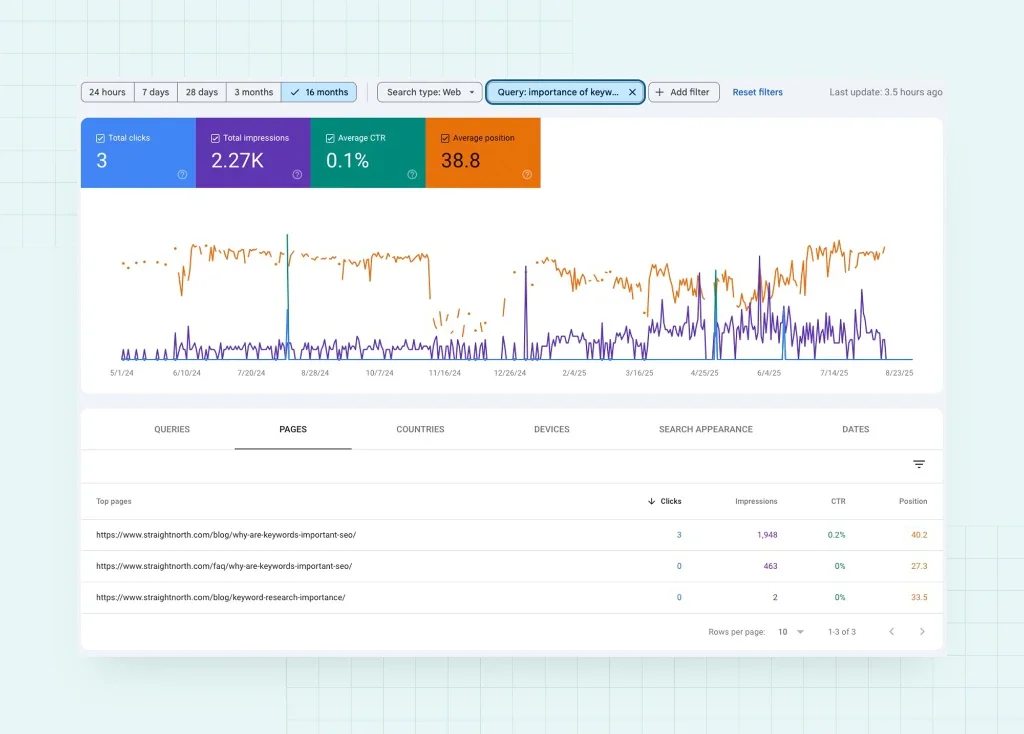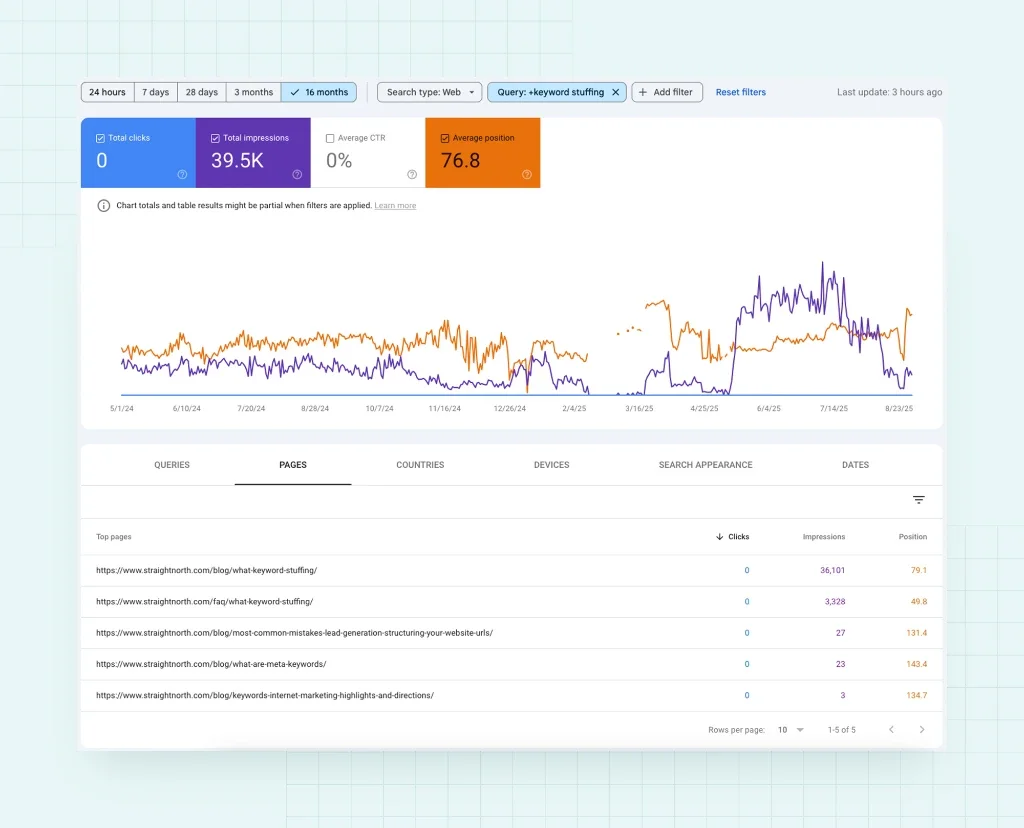Ever wonder why your site isn’t ranking as high as it should, even though you’re publishing tons of content? Take a good look at your website. All those pages you’ve worked hard to create, are any of them secretly competing with each other? It happens more often than you think. When multiple pages target the same keywords, search engines don’t know which one to rank, so they end up holding them back. This is called keyword cannibalization, and instead of boosting your traffic, it can quietly drag your rankings down.
Google’s algorithms have evolved in that having the same keyword on different pages is becoming less of an issue if the page’s content serves a distinct purpose. Google has a way to distinguish semantics and nuances in search queries. This new algorithm rewards more human-centric, holistic approach to content and less of a focus on keywords as the only factor.
Common Misconceptions About Keyword Cannibalization
It used to be that if you had pages stuffed with keywords that all mirrored each other that it would lead to keyword cannibalization. For example, you have five pages on your site optimized around “best roofers in Chicago,” they could be in competition and hurt your rankings.
Now, Google breaks it down further and will look more at the content on the pages and their purpose, versus keywords only. In this case, covering similar topics isn’t going to inherently cause problems if each page serves a unique purpose. Keyword cannibalization is more of a problem if multiple pages have the same words and same intent.
Two Parts to Identifying Keyword Cannibalization
- Spot potential overlaps: Look for cases where multiple pages on your site may be targeting the same or very similar keywords. Then check whether this overlap is having a negative impact on rankings, traffic, or visibility.
- Confirm if it’s keyword cannibalization: Would consolidating or restructuring some of the pages help improve performance in Google? Check for evidence that overlapping content is holding pages back, and whether merging or refining content leads to ranking improvements.
Spot Keyword Cannibalization with Google Search Console
A great feature in Google Search Console is the query tool. You can use it to look for keyword cannibalization, as it shows which page are getting impressions for the same type of query, and which pages are getting more clicks.
“Search Console is my preferred tool for trying to look for keyword cannibalization, because you get to see exactly what queries certain pages are showing impressions for. And it’s easy to use the query filter to tell if you have multiple pages that are getting impressions for the same type of query.”
You may notice that a page is not ranking well on Google. You can review that page and figure out if you need to rewrite or condense it to make it better. With each revision, you can track it and see how it’s performing. It can take time, but it helps keep your website clean and ranking better in search results.
During the review, you may also realize that you that the same keyword is appearing in several places (also known as, keyword overlap) from related content.
Same Keywords, Different Pages
Keyword overlap is when you are writing about a service or an offering, and you use similar verbiage on different pages. The key is to vary up the purpose of the pages, titles, and content so it makes sense to include the keywords throughout.

Looking Out for Keyword Overlap
There are lots of scenarios where you will have many similar keywords on different pages. You sort of want to make sure that you’re following best practices, in general when it comes to creating content where you’re avoiding keyword stuffing. You also want to just avoid having titles that are too similar, or having very similar keywords within the titles in a way where the titles are going to get confused with one another and things like that.
Overlapping Content Effectively
In different situations, you’ll have content that overlaps on different pages of your website — often it’s to reiterate a previous point or to dive in deeper to a topic.
For example, you’re selling a product, and you want to highlight it in several different ways on your site. That’s where the content may be similar but have slight nuances to differentiate it from a previous page. One page may introduce the product. The next tells the story of how it works. There may be a third page with a case study of someone using the product. All these pages will have similar keywords about the product, but it can still show up as separate entries for search engines and achieve multiple purposes for the website owner.
How Much Overlap Is Acceptable?
When a visitor comes to your website and spends some time on a page, then clicks to a child page and quickly exits, it may be that the content is redundant. In that case, you can work to combine or condense the pages to get your point across more seamlessly and without repetition.

Look Out for Redundancies
I would say generally a good rule of thumb is, you know, think about how a user or a human would interpret it. If a person is going to think two pages are redundant, and keep in mind, different pages and redundancy might depend on the audience and the context, but if humans in general, if two pages are going to seem redundant, there’s a good chance it’s probably just not going to be worth having separate pages on Google. But there’s no exact limit. There’s no exact line that you cross.
Think from the perspective of the user. If they are clicking through to the next page on your website and they think, ‘Didn’t I just read this? It’s the same thing worded just a little differently.’ Then, you probably want to combine those pages and really keep SEO in mind.
It’s all context dependent. When similar pages are linked too closely together, redundancies can creep in and risk confusing users. To prevent this, it’s important to periodically review your content for keyword overlap and to make sure each page has a distinct purpose and delivers unique value.

Avoiding Duplication of Effort
As companies grow, so do their services, offerings, and teams. With more people and moving parts, it becomes harder to coordinate efforts and ensure alignment. Without clear communication and oversight, different teams may unknowingly create overlapping content or chase the same goals in isolation. It can lead to wasted resources.
It can also happen with SMBs with different writers creating content for various pages. Without an editorial calendar or content management process, duplicative writing may happen there as well. The more pages there are, the greater the risk of overlap with the content as it’s tougher to coordinate.
In this case, you’ll also want to pay attention to budget and have a system in place for what content goes where. It’s an inefficient use of your content creation resources that can cause redundancy.
Negative Effects of Duplication of Effort
Resource allocation is a key factor in running an efficient business. If three writers are producing the same type of content, it may come with a high opportunity cost of not creating more unique content that ranks better and gets clicks for a wider range of search queries.
To avoid this, sit down with the content creation team to align on each piece’s purpose. Clarify the goal of every page, the type of user it’s targeting, and the queries it should rank for. Once the pages are live, track their performance in Search Console, set clear ranking goals, and measure progress to ensure each page is delivering value.
“People like to approach SEO as sort of a general thing of ‘we’re just creating a lot of content, and we want to rank better on Google,’ but I think it’s important to have specific goals in mind, especially for each page, and following up on those goals.”
How Is the User Experiencing Your Site?
Keep the user’s journey through your website in mind. If you have a bunch of product pages and some start to mimic others except for tiny differences, then you need to think more about combining those pages to keep the site fresh. Users shouldn’t have to navigate all the pages if they can get the information on one page.
Combining Pages to Save Clicks
When users arrive from the same search query, it makes sense to give them everything they need in one place. Conversions become harder if they have to click through multiple pages before taking action. Start with your end goal, then work backward to design a clear path for users. Minimize diversions and consolidate information into as few pages as possible.
One strong page could provide better rankings than several weak ones.
Making Sure the Right Pages Show Up in Google Search
Now you have your content and pages ready to go, but you need to check that the right pages are showing up on Google. Time to break out the query filter in Search Console.
Search Console can help you:
- Look for certain themes or categories of keywords.
- Use partial search to find a broad range of queries.
- Find all the pages that are ranking for a certain query.
- Determine if they should all be in the query.
- Discover pages at the top that are getting a lot of impressions or clicks that shouldn’t be on Google.
- Uncover empty URLs that have a title tag but are only ranking for that keyword.
- And that title tag may work better for content on another page.
These insights are all important as they can help you figure out what pages need to go, can stay, and which need to be revised.
Steps to Keep Some Pages Off Google
During your page reviews, you may notice some pages that you need to remove, redirect, or repurpose. Is there valuable content on the page that makes sense to retain? Then you can bring it over to the live page on your site.
You also have the option of a no-index page, which allows you to have a page on your site that’s not searchable by Google. The final solution is using rel canonical tags. They tell Google which version of the page you want to index out of a bunch of pages that are variations of the same content. These tags are mostly used when it’s duplicate content.

Duplication of Effort in Relation to Keyword Cannibalization
Resource allocation and content generation go hand in hand. Companies need to be careful not to oversaturate pages with content that won’t benefit them or their users in some way. If it’s not ranking on Google, reaching a new audience, or relevant to the current user, then it doesn’t belong on your site. It may not be that Google’s actively ranking you lower, but it is a waste of your budget and it may not be contributing to the overall goals you set for your site.

Creating Purposeful Content
Even if you create a bunch of blogs that are really similar, and it doesn’t hurt you on Google, if it’s not having any negative effects in terms of how they’re performing on Google, you’re still potentially missing out on the positive effects of creating better blogs that would have been performing better on Google for more unique keywords. So, if you’re going to try to create a lot of content that’s all kind of about the same topic, or, you know, create a lot of similar blogs or pages, or whatever about a certain topic, I think you want to make sure that each one has a unique purpose, for human users and for, you know, a certain target audience on Google.
Redundancy arises when a business invests resources in developing content that fails to generate measurable returns. While keyword cannibalization can negatively impact search performance, duplication of effort represents a more significant concern. It not only leads to inefficiencies but also diverts valuable employee time and company resources away from higher-impact initiatives. In this context, cannibalization is often best understood as a byproduct of the broader issue: a misaligned or overlapping content creation processes.
Key Takeaways
- Keyword cannibalization is less of a threat in 2025: Google understands semantic differences and intent better.
- The real risk is duplication of effort, which can waste resources.
- Focus on unique intent for each page, avoid redundant content, and streamline the user journey.
- Use Google Search Console to monitor overlap, consolidate underperforming pages, and guide SEO decisions.









